
Do you have a question about the Carrier N4H7T and is the answer not in the manual?
| Model | N4H7T |
|---|---|
| Type | Heat Pump |
| Brand | Carrier |
| SEER Rating | 17 |
| HSPF Rating | 9.5 |
| Refrigerant | R-410A |
| Voltage | 208/230 V |
| Phase | 1 |
| Warranty | 10-year parts limited warranty |
| Stages | Two-Stage |
| Compressor Type | Two-Stage Scroll |
Explains safety alert symbol and signal words (DANGER, WARNING, CAUTION) for injury prevention.
Warns about electrical shock hazard before installation, modification, or servicing.
Warns about explosion hazards from oxygen, gas, and pressure in compressors.
Warns about sharp edges on sheet metal parts and advises protective gear.
Guidelines for routing refrigerant tubes to minimize noise and vibration.
Instructions for moving and unpacking the unit without damage.
Procedures for inspecting the unit and filing shipping claims.
Guidance on installing the unit on a solid, level pad and tie-down methods.
Caution regarding unit stability in adverse weather conditions.
Specifies required clearances for airflow, wiring, and servicing.
Instructions to check defrost thermostat location on the stub tube.
Advises elevating the unit for drainage and to clear snowfall.
Guidance on installing LSV for long-line or high-elevation piping.
Warns about refrigerant handling, venting, and pressure relief.
Caution on burying refrigerant tubing and ensuring proper rise.
Discusses tubing requirements and potential losses for long linesets.
How to operate service valves and install the heating piston.
Warns about fire risk from refrigerant and oil during brazing.
Procedures for connecting vapor and liquid tubing to service valves.
Caution to use heat-sinking material when brazing near service valves.
Warns of hot components after brazing and advises protective gear.
Instructions for installing the liquid line filter drier, including brazing precautions.
Caution against using the compressor as a vacuum pump.
Details the deep vacuum method using 500 microns for evacuation.
Inspects tubing for rubbing and ensures field wiring compliance.
Warns of shock hazard and emphasizes proper grounding.
Instructions for connecting ground and power wires to the contactor.
Guidance on routing and connecting 24v control wires.
Ensures wiring and tubing are secured and not rubbing.
Instructions for powering the crankcase heater before startup.
Refers to separate instructions for installing accessory kits.
How to select airflows for ECM furnaces based on cooling stages.
Adjusting DIP switches for variable speed furnaces to match cooling stages.
How to select airflows for FV4C fan coils for cooling stages.
Safety precautions for handling refrigerant during start-up.
Warns against venting refrigerant to the atmosphere.
Cautions against overcharging, vacuum operation, and hot components.
Step-by-step guide for system start-up after installation.
Details the operation sequence for cooling mode.
Details the operation sequence for heating mode.
Explains the internal unloading mechanism for two-stage operation.
Describes the Quiet Shift-2 mode for reduced defrost noise.
Explains defrost control settings and cycle termination.
How to initiate a forced defrost using speedup pins.
Important note that charging should only be done in high stage.
Step-by-step guide for adjusting refrigerant charge based on lineset.
How to use the heating check chart to verify system pressure and temperature.
Checks suction pressure and compressor current during stage switching.
Methods to verify the operation of the compressor unloader.
Essential checks before leaving the job site, including wiring, tubing, and documentation.
Uses winding resistance table to diagnose compressor damage.
Overview of 2-stage compressor, internal relief, and control contactor.
Explains the function of the low pressure switch for protection.
Advises on periodic maintenance for performance and reliability.
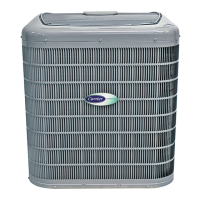


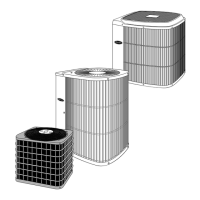



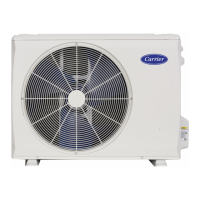

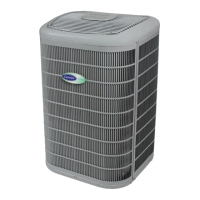
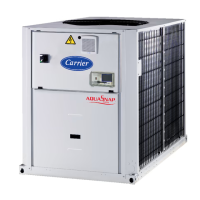
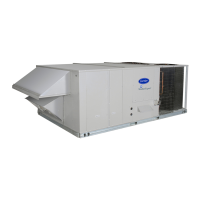
